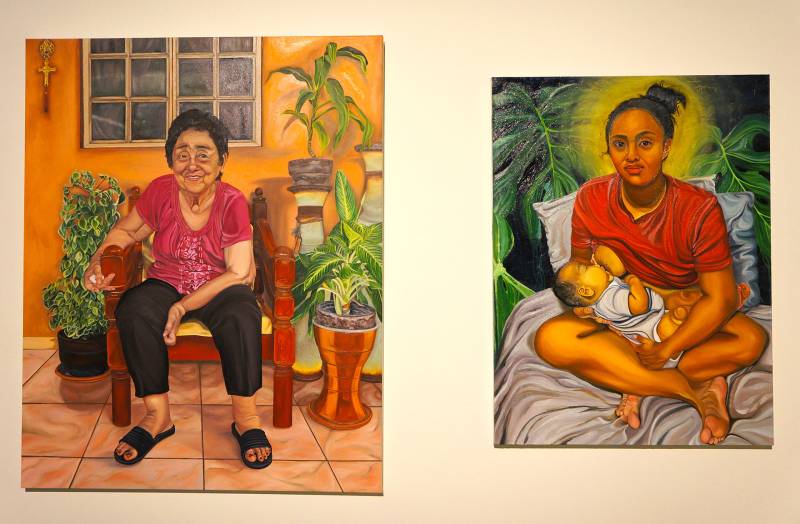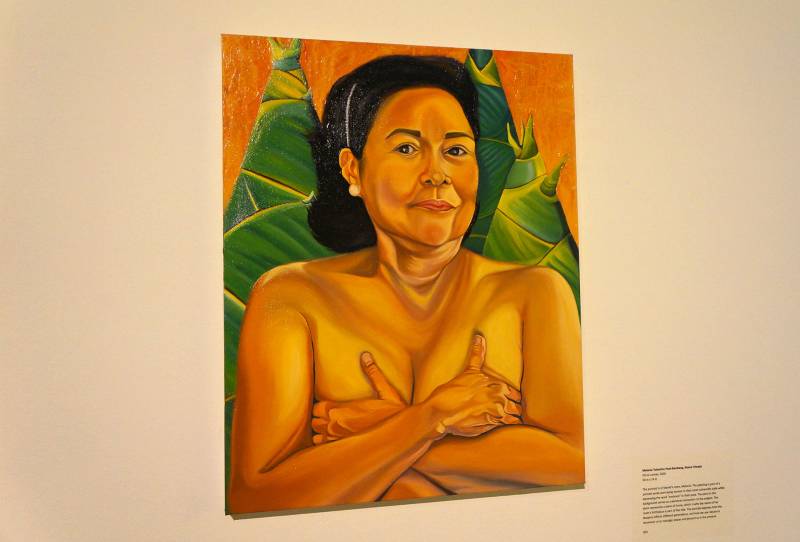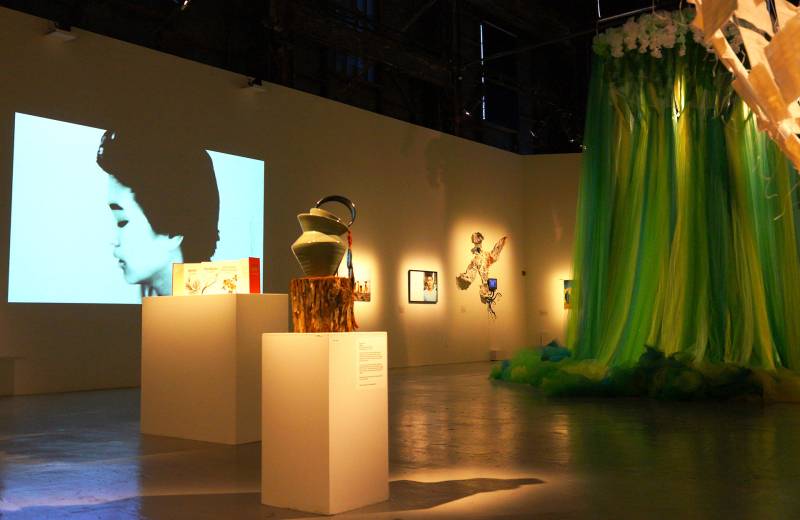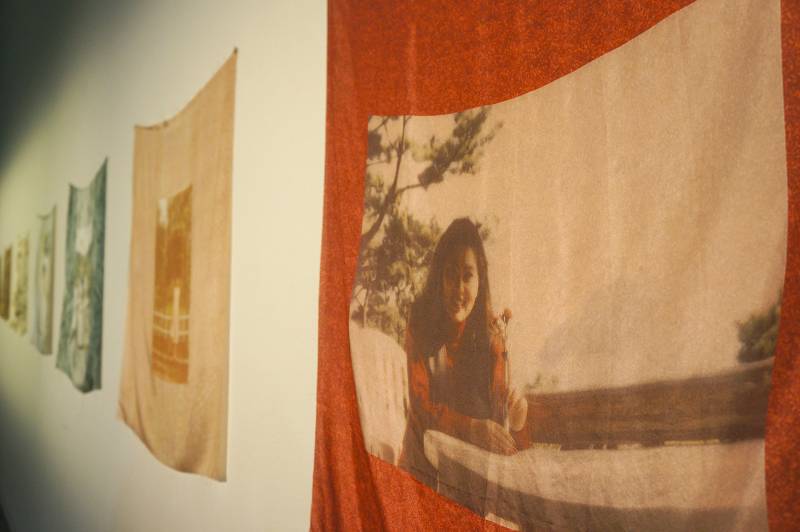When I was growing up, my grandmother’s wrist was always adorned with a thick jade bracelet, its smooth, cool-green surface prominent against her skin. At some point, my mother followed suit, and the jade became a permanent extension of her body as well. A symbol of protection, jade has come to represent legacy, strength and good fortune across many Asian American and Pacific Islander cultures. While these themes remain consistent, their presence shifts and metamorphosizes alongside the transformation of new generations.
The dynamic nature of the jade, AAPI heritage and the expansiveness of womanhood are all reflected in Jade Wave Rising: Portraits of Power, a new exhibit on view at SOMArts Cultural Center through May 21. Curator and artist Yeu Q Nguyen questions the concept of power in the representation of AAPI women — particularly, how sticky, elusive and vast it can really be. Power is subjective and takes shape in various forms: tender and vulnerable, subversive and brash, self-contained and participatory. The exhibit is angled through the lens of 20 artists, all of whom offer their own individual responses to power.

San Francisco artist Mariel Paat’s vivid oil paintings, each representing a different woman in her family, are rendered with sharp color and delicate realism. In one, her grandmother is smiling, elated at being able to return to her home in the Philippines after years away. In another, Paat’s older sister Mirela breastfeeds her son. In the last portrait, her mother Melanie embraces herself as she looks towards the viewer.
One constant in Paat’s portraits is her subjects’ fixed, unbroken gaze. Their calm poses exude comfort in their surroundings, their strength and self-assuredness silent but commanding. Paat instills every painting with character and personality through precise attention to posture and expression. Beyond technical skill, the portraits are also full of love and sincerity, intimately capturing how the artist views the most important women in her life: resilient, powerful and vulnerable in their own ways.

Similarly, through a series of silk prints, artist Julie Lee weaves together a close and quiet look into one woman’s life before her immigration to the United States. In many of these photographs, she poses and smiles against scenic backdrops, the patterns of the silk reflecting the patterns and colors of her outfits. Looking at these portraits, I can’t help but think of my mother again. At home, there are scrapbooks filled with photos of her as a young adult posing amongst landmark American staples: shiny Las Vegas casinos, picturesque statues and glimmering bodies of water. She still wore her hair long, and dressed in peplum tops that have long been shoved into the back of her closet.



